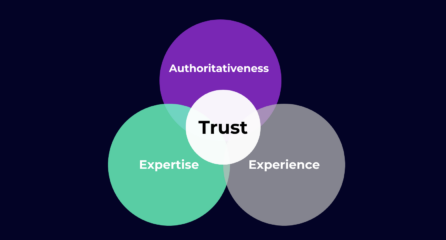Content marketing is story-telling, according to Sean McColgan, founder and director of https://www.seanmccolgan.com. He argues that ‘content marketing strategy is all about creating awareness, creating engaging content which will generate top search rankings and revenue’, meaning there is no longer room for disinteresting, thin and poor-quality content. We want to take this opportunity to explore Sean’s idea and tell you guys a little ‘story’ about how you can increase traffic with an exciting new wave of content marketing.
Think objectively
Ask yourself these questions before you create your content:
- Who are your audience?
- What audience do you want to target with your content marketing?
- What can you provide them to make them better consumers?
- What is the purpose of your content? To build a relationship with your target audience? Increase traffic? To attract links? To get social shares?
What’s trending?
The amount of content distributed on the web every day is unimaginable; therefore it isn’t surprising that content which isn’t thoroughly researched and of genuine value gets lost among the other ‘noisy’ content cluttering up the SERPS.
Before starting any piece of content, you must think of your target audience and put yourself in their shoes. What will be of interest to them? What information will they benefit from? What are they searching for?
There are several useful metrics you can use to find out this information, allowing you to tailor your content to your audiences more naturally.
- Google Trends
- Google Ads Keyword Planner
- Search Metrics
- Social channels – explore Twitter and Facebook, listening to what your client’s audience are interested in
Consider Keywords and Search Behaviour
Now that you have an idea of what information your target audience needs, you can delve deeper into the topic by carrying out some keyword research and looking at real-life search data. If you can find a group of related keywords and phrases based on real life search data then this can really help shape your content. You can find out what your audience is searching for by using the Google adwords keyword tool to see the volumes of search for specific terms or find out what people search for using Keywordtool.io
Remember to use relevant words in the title and headings to help guide the reader through the content. The title will be the first bit of content your user will see, so it has to be relevant and engaging. The title sets the tone for the rest of the content, therefore it needs to be ‘to the point’ in order grip the user and persuade them to continue reading.
Favourable Content Models
No-one likes pointless, thin and poorly-written content, especially Google. Unique, detailed and genuinely useful content is the way forward. You are pretty much guaranteed to see an improvement in traffic by distributing content which users will find informative and interesting. Aside from this, rich content will communicate the fact that your business is reputable and trustworthy and help towards conversions and lasting relationships.
The most successful styles of content are as follows:
- How to guides
- Stories that provide commentary and insight into trending news/topics
- Curation of other content that adds real value
- Checklists
- Evergreen Content (1000+)
- Infographics
- Data Visualisation
Infographics
These snazzy visual representations of information are a popular way to present content and done correctly still have real value. Aside from being visually appealing, infographics also present data in a much friendlier way, allowing users to have the ability to see patterns and trends easily. There are several infographic design platforms available, offering paid and free services.
Piktochart has a wide variety of templates suitable to a range of industries. With excellent themed graphics and a user-friendly navigation, this platform makes creating infographics easy and fun!
Data Visualisation
Content marketing often involves presenting information visually, turning data into accessible graphics adds context and further value to the user. Visualisation is becoming far more important in content marketing, so embed it where you can so that it can be shared easily.
Share content on Social Media
Simply sharing content onto social sites is not effective enough anymore. A big part of content marketing now is about building relationships. Once again you will need to consider your target audience. By all means, share your content via social channels such as Facebook.com and Twitter.com, but you should also be considering building genuine relationships with the following:
- Bloggers
- Journalists (they’re always looking for good stories on relevant topics)
Add images to content
Content with no visualisations look boring and disinteresting to users and will ultimately persuade them to click off. Embed images in your content which tells a story and evokes curiosity. There are plenty of free stock image platforms available, offering free and paid images. Remember to always optimise the images by adding keywords into the alt and title attributes.
Repurpose Exciting Content
Creating awesome content takes time. If you are short on time, then you can repurpose your existing content. What we mean by this, is take existing content and present it in a different format that will be useful to your user. So, let’s say you have created a ‘how-to-guide,’ why not create an Infographic, using the same content? Or, why not take a statistical report and create an interactive data visualisation?
Site Speed
Since you have been creating large pieces of content enriched with visualisations, these will have an affect on your site speed. Improving the load time of your content and your site overall will increase traffic to your site and hopefully generate more conversions.
So, there’s how you can increase traffic and increase engagement with content marketing! Experiment with a few methods and see if your traffic increases! Let us know how you get on. Here at Loom, content marketing forms one aspect of our approach to helping your business grow.



